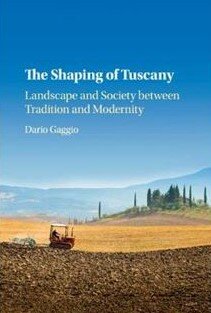Selected Indexed Monographs
Laura Saetveit Miles, The Virgin Mary’s Book at the Annunciation: Reading, Interpretation, and Devotion in Medieval England (Boydell & Brewer, 2020).
An exploration of the Annunciation scene (Luke 1:26-38) in the literature and art of the Middle Ages, this monograph presents the first full-length analysis of the motif of Mary’s book and argues that her reading offered one of the most powerful models of reading and devotion for medieval readers – particularly enclosed religious women and female visionaries.
Dario Gaggio, The Shaping of Tuscany: Landscape and Society between Tradition and Modernity (Cambridge University Press, 2016)
Uncovering the experiences of ordinary people, Professor Gaggio traces the history of Tuscany to show how the region's modern conflicts and aspirations have contributed to forging its modern-day beauty. He demonstrates how the rise of Fascism was particularly violent in rural Tuscany, and how struggles between Communist sharecroppers and their landlords raged long after the end of the dictatorship. In more recent decades the emergence of the heritage industry has raised the spectre of commodification. This book tells the story of how many Tuscans themselves have become tourists in their own land - forced to adapt to rapid change and reinvent their landscape in the process.
Elizabeth Papp Kamali, Felony and the Guilty Mind in Medieval England (Cambridge University Press, 2019)
This book explores the role of mens rea, broadly defined as a factor in jury assessments of guilt and innocence from the early thirteenth through the fourteenth century - the first two centuries of the English criminal trial jury. Drawing upon evidence from the plea rolls, but also relying heavily upon non-legal textual sources such as popular literature and guides for confessors, Elizabeth Papp Kamali argues that issues of mind were central to jurors' determinations of whether a particular defendant should be convicted, pardoned, or acquitted outright. Demonstrating that the word 'felony' itself connoted a guilty state of mind, she explores the interplay between social conceptions of guilt and innocence and jury behavior.


